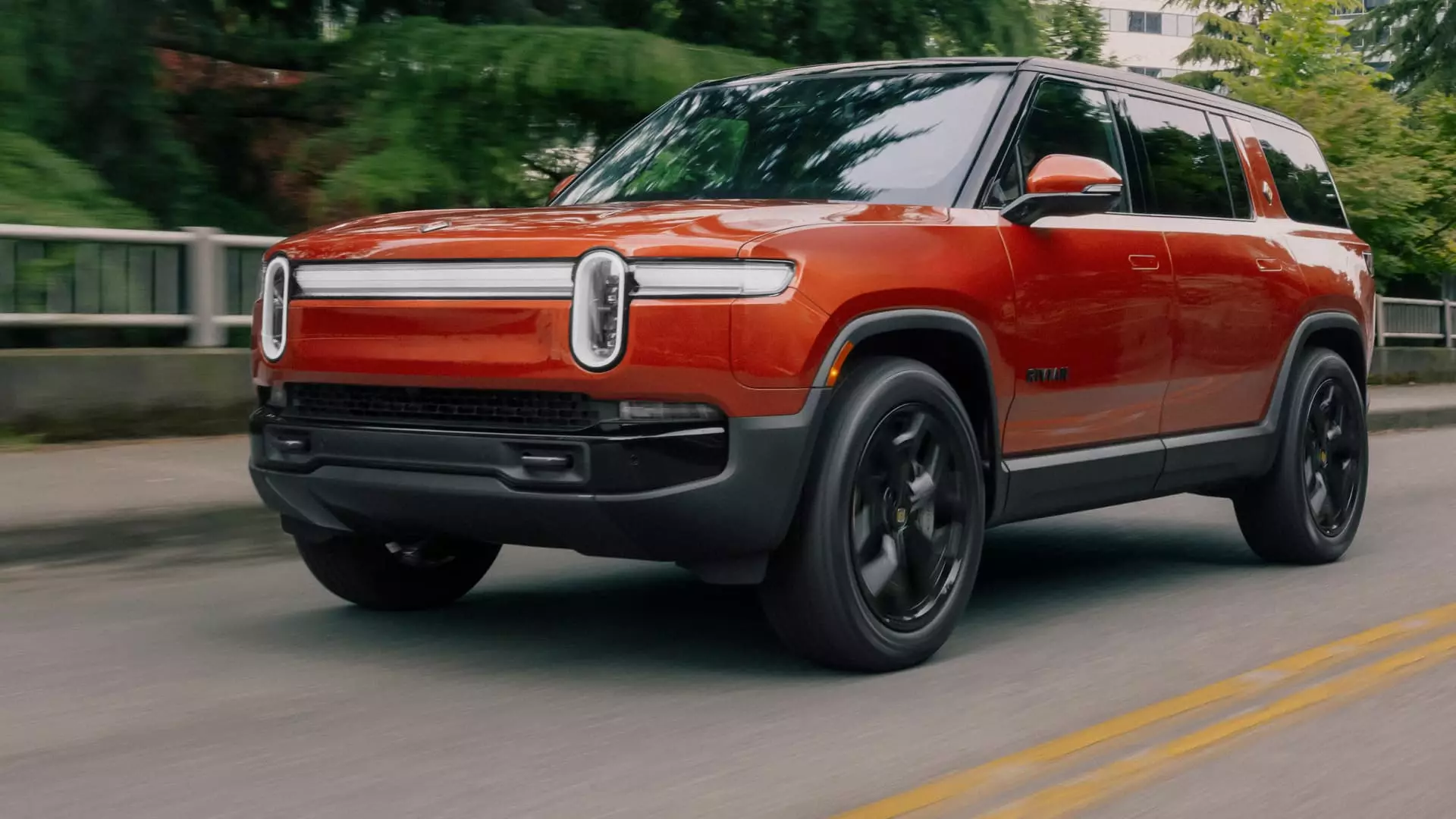Rivian Automotive has recently emerged from the tumultuous landscape of Wall Street scrutiny, reporting notable fourth-quarter earnings that surpassed analysts’ expectations. At the close of last year, the electric vehicle (EV) manufacturer recorded its inaugural gross quarterly profit of $170 million. This figure signifies a critical milestone for Rivian, which has been rigorously observed by investors eager for signs of financial stability and growth. Gross profit, a measure that assesses sales and production without considering operational expenses, points towards Rivian’s evolving manufacturing capabilities and the potential for sustained profitability in the future.
The company is eyeing another modest gross profit in 2025, though it brings to light a pertinent question: when will Rivian achieve profitability in terms of net income? While optimistic about operational efficiencies, Rivian’s guidance also reveals the fragility of its current successes. The anticipated adjusted loss for 2025 is estimated to be between $1.7 billion and $1.9 billion, a reduction from the more staggering loss of $2.69 billion recorded in 2024.
In the ever-evolving electric vehicle market, Rivian’s forecast of delivering between 46,000 and 51,000 units in 2025 marks a slight decline from the 51,579 vehicles delivered in the previous year. This adjustment underscores a crucial aspect of the automotive sector — consumer demand and external market conditions remain uncertain. Following the earnings report, Rivian’s shares experienced initial growth of around 7%, though this uplift was transient, ultimately declining to close at $13.61 per share, down 2.3%. Such volatility suggests hesitance among investors, likely driven by the broader challenges facing the EV industry today.
CEO RJ Scaringe, in an interview with CNBC, candidly acknowledged the uncertainties that cloud the automotive landscape, particularly the implications of potential federal incentive removals for electric vehicles and evolving tariff policies. This candidness may resonate with shareholders, as it reflects the inherent risks associated with the rapidly changing market environment. Rivian’s shareholder letter emphasizes the necessity to remain vigilant, stating, “While uncertainties persist, we remain focused on executing against our key value drivers and are confident in electrifying the world in the long term.”
Rivian is looking forward to a capital expenditure strategy for 2025 that estimates spending between $1.6 billion and $1.7 billion. This budget reflects an increase from $1.41 billion in 2024, as the company lays the groundwork for the introduction of its new “R2” midsize vehicles set to debut in 2026. The decision to idle its sole manufacturing facility in Normal, Illinois, to retool for new vehicle production is a calculated risk, indicative of Rivian’s long-term vision for growth and profitability.
Financial projections from Rivian Chief Financial Officer Claire McDonough highlight the anticipated hits to their EBITDA from falling sales, largely due to expected changes in government tax credits. Such fiscal realities are akin to walking a tightrope; while expansion plans are essential to Rivian’s growth strategy, their success hinges precariously upon external market variables.
Rivian’s detailed quarterly performance reveals fewer losses than anticipated, with a significant narrowing of the loss per share to 46 cents, compared to the 65 cents that analysts had predicted. Revenue surged to $1.73 billion, eclipsing estimates of $1.4 billion. Furthermore, dividing their revenue streams into “Automotive” and “Software and Services” allows for increased transparency, addressing investor concerns. The latter sector has shown promise as Rivian plans to grow its software initiatives, bolstered by a new partnership with Volkswagen, a move that could diversify revenue beyond vehicle sales.
While Rivian utilized the sale of regulatory credits and software services to achieve this quarter’s results, the future of such revenue streams hangs in the balance, subject to regulatory changes. The quarterly net loss of $743 million reflects a more palatable performance compared to the $1.52 billion loss experienced during the same quarter a year prior. Nonetheless, the company’s overarching net loss of $4.75 billion for 2024 remains daunting.
Rivian Automotive stands at a critical juncture, poised between significant achievements and formidable challenges. While its recent quarterly earnings provide a glimpse of potential profitability, the company’s path forward is entwined with numerous external uncertainties. As it navigates these challenges, Rivian’s proactive stance towards establishing new revenue streams and its clear vision for future vehicle launches will be essential to retaining shareholder confidence and ensuring its place in the competitive landscape of electric vehicles.

